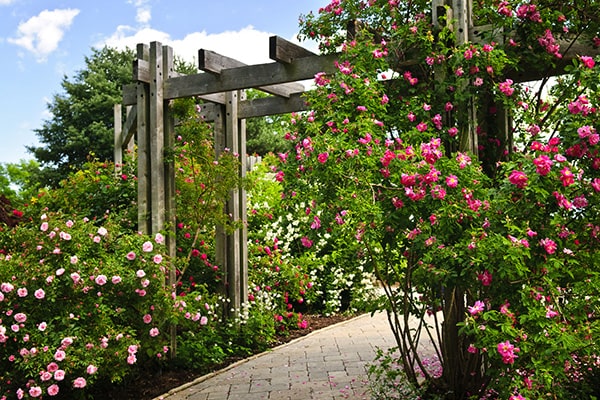
Choosing Climbing Plants for Arches, Arbours and Pergolas
Garden pergolas, arches and arbours are wonderful additions to any outdoor space. Not only do they look great but they provide invaluable support to some of the most beautiful plants a gardener can wish for. After all, climbing plants are the key to enhancing your arch, arbour or pergola.
Here we suggest the best climbing plants for your garden feature and give you some top tips on how to care for your climbers.
Your Choice of Garden Features
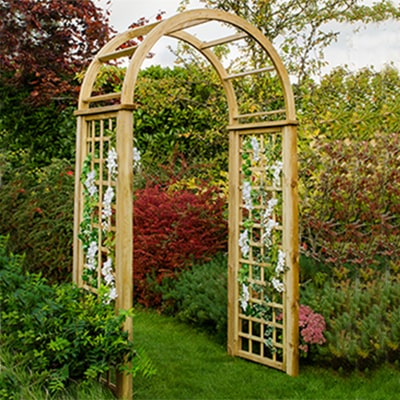
A stately pergola defines an area of your garden, providing shade and shelter from the weather while hosting a barbecue or gathering. Easy and quick to grow sweet peas are perfect partners to pergolas. The perfume filled evening air is exquisite for guests to enjoy.
An arbour provides a secluded spot in which one can relax and enjoy spending time outdoors. For peace and tranquillity away from the madding crowd, hustle and bustle of life and a quick break from weeding, nothing beats the evergreen leaves (also wonderful at providing shade and nesting spots for small birds) and sweet scent of a star jasmine.
With a myriad of both traditional and modern designs available, any garden can house one of these impressive structures.
Though eye-catching features in their own right, it is possible to further elevate a pergola, arch or arbour’s style by gorgeous plants.
The Best Climbing Plants for Garden Features
Tips on Choosing Roses
A rose is a most quintessentially British flower and are an ever-popular choice of climbing plant. The choice is wide with virtually every shade and colour available - except a true blue or black. ‘Iceberg’ is a tremendous variety with pure white blooms whereas ‘Burgundy Ice’ is at the other end of the colour spectrum with deep purple blooms.
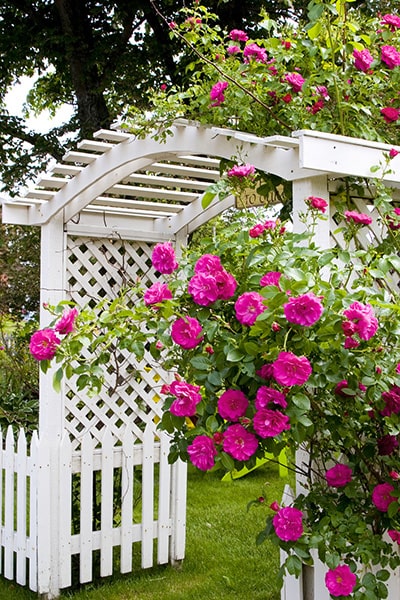
The size of flowers also varies from variety to variety with the large, blousy blooms of ‘Eden’ guaranteed to stop garden visitors in their tracks, and ‘Banksiae Lutea’ with its pretty yellow flowers being equally sensational.
Take your time, luxuriate in the catalogues and photos, and choose the rose you really love as it will be with you for decades. Ramblers are more robust than climbers so ensure your pergola or arbour is strong and sound.
Just like every other rose in your garden, ensure you look after the plant. It’s easy enough:
- Always prune out any branches that are growing in a wayward direction or rubbing against other stems.
- Nip out all diseased branches before any infection spreads.
- If aphids take a fancy to the new shoots sort them out quickly (one aphid quickly becomes thousands - they don’t need a partner to reproduce - the pesky devils!)
- Clear any fallen leaves away from the base of the plant.
And that’s all there is to it - oh, and keep newly planted specimens watered in dry weather and tie in as and when you need to. Then sit under your arbour and feed your soul and senses.
Caring for a Jasmine
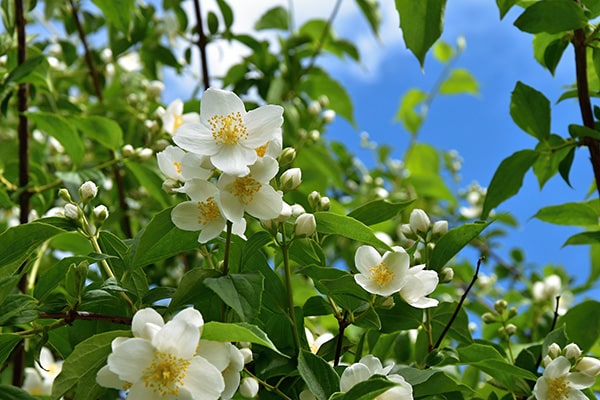
It’s so enthusiastic, it can become unruly and tangled - chop it off where you don't want it to keep things under control. And when it comes to the dreaded pests and diseases nothing really bothers a jasmine. Feed in spring with a fertilizer formulated for tomatoes and, whoosh, away it will go.
Why Choose a Honeysuckle
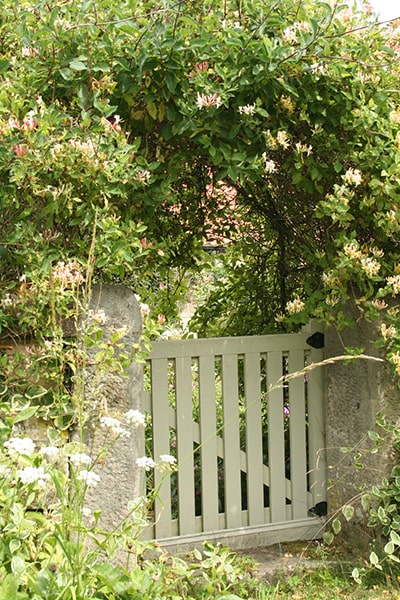
But beware - some varieties of honeysuckle aren’t actually scented! The best for fragrance has to be a variety called ‘Graham Thomas.’ Once grown, once experienced you will never grow another honeysuckle. Yep, it’s that good!
Growing a Wisteria
Wisteria are traditional favourites for larger structures (and walls) and fill the air with perfume in May and June. The long racemes of blooms are available in lilac, purple or white and all are superb.
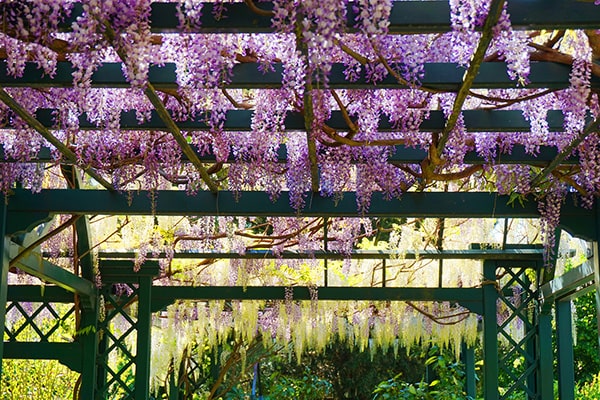
A quick tip to get the best from your plant is to scatter fresh, cold ash from any woodburner around the base of the plant in early spring. This adds vital potash to the soil and that can help in flowering. Make sure the ash is from wood and not coal to avoid contaminating the soil.
The Wonder of Sweet Peas
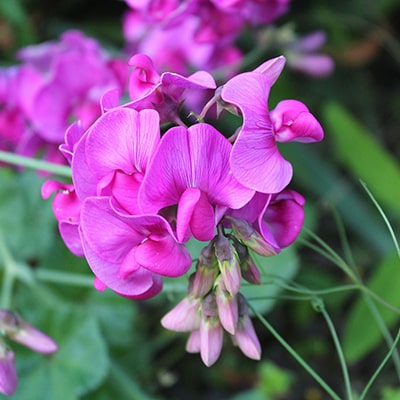
You do need to guard against slugs and snails but once up and running, sweet peas take some stopping. Keep them watered in dry weather and using stored water in water butts is so much better to use than tap water when the plants are thirsty. However, tap water is always better than nothing on your sweet peas. Nip off the flowers as they fade to save the plant pouring its energy into forming seeds (unless you want to harvest your own seeds to grow next year)
There are hundreds of varieties to choose from, an embarrassment of colour choice, but for the most seductive of fragrances go for an original called ‘Cupani’. It produces small flowers in mauve and purple but a small bunch of freshly picked blooms will fill a room with scent - an arbour dripping in flower is simply intoxicating. Plants will die off every year but new plants are easily grown from fresh seed.
Clematis – a year-round planting combination!
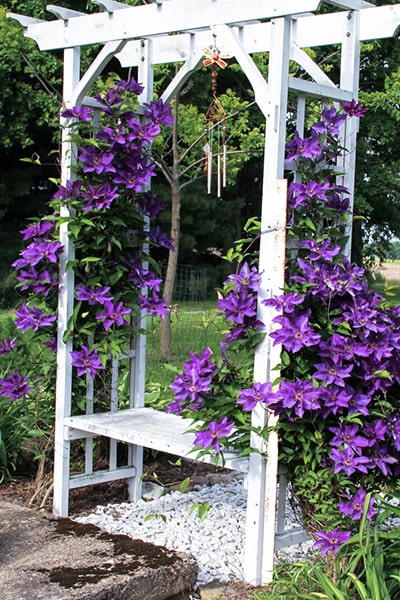
- Spring: Clematis alpina flowers early in spring producing masses of mid blue blooms. What a start to the gardening year!
- Summer: Clematis montana and all large flowered clematis help swell summers abundance of bloom.
- Autumn: the delightful Clematis texensis is perfect for autumn with nodding deep pink flowers in September and October.
- Winter: go for the evergreen Clematis cirrhosa ‘Freckles’ for highly scented white, speckly flowers.
Golden hops is a another super plant for quickly scrambling over a structure. Its vibrant yellow leaves will light up a sunny spot. Virginia and Boston creepers are thugs and should be avoided unless you want a jungle effect.
Evergreen Ivy
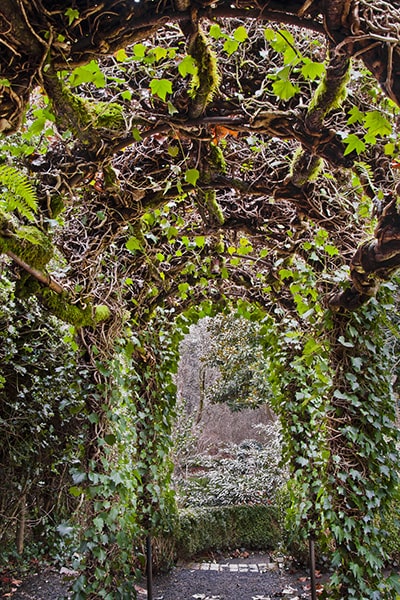
Ivy will also provide a little more shade from the summer sun when grown over the top of a pergola, allowing you to sit and enjoy the garden even during the hottest times of the day.
Enjoy! Whatever you plant, create time to sit and enjoy the blooms of your labour.
What climbing plants would you love to see decorating an arch, arbour or pergola? Let us know in the comments section below.
If you’re in need of a new garden structure to improve your outdoor space, please feel free to have a browse of our extensive range of arches, pergolas, and other Outdoor Living products here
